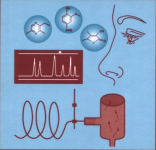Gas Chromotography Olfactometry
The recent thread on GC for weed got me thinking. I made a post that mentioned how the type of detector(s) that you hooked to your column(s) was of prime importance.
I didn't want to clog the thread, but there is an interesting detector that is very useful for certain types of compounds. It is more sensitive than MS, FID or any other electro-chemical detector for these compounds. The cool thing about this detector is that it is extremely inexpensive (free), and easily available.
It is the human nose!
Using your nose as a detector with GC is called gas chromotography olfactometry (the term olfaction means "sense of smell"). It really is as simple as sniffing the analytes as they elute from the end of the GC column! For smelly compounds, the nose has a much lower threshold of detection than any machine.
I was wondering if any members here have tried this with weed? If so, please tells us about it!

The recent thread on GC for weed got me thinking. I made a post that mentioned how the type of detector(s) that you hooked to your column(s) was of prime importance.
I didn't want to clog the thread, but there is an interesting detector that is very useful for certain types of compounds. It is more sensitive than MS, FID or any other electro-chemical detector for these compounds. The cool thing about this detector is that it is extremely inexpensive (free), and easily available.
It is the human nose!
Using your nose as a detector with GC is called gas chromotography olfactometry (the term olfaction means "sense of smell"). It really is as simple as sniffing the analytes as they elute from the end of the GC column! For smelly compounds, the nose has a much lower threshold of detection than any machine.
I was wondering if any members here have tried this with weed? If so, please tells us about it!




